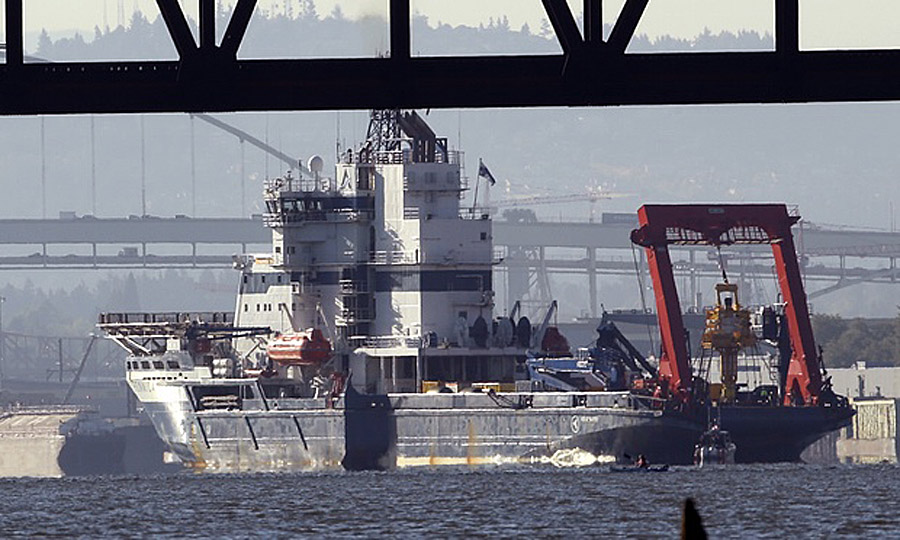
Royal Dutch Shell Icebreaker Leaves Portland After Protest
Royal Dutch Shell Icebreaker Leaves Portland After Protest. Authorities used boats, personal watercraft, poles and their bare hands to remove protesters in kayaks and hanging from bridges who had tried to block a Royal Dutch Shell icebreaker bound for an Arctic drilling operation.
The Fennica left dry dock Thursday afternoon and made its way down the Willamette River toward the Pacific Ocean soon after authorities forced the demonstrators from the river and the St. Johns Bridge. Shell spokesman Curtis Smith said the Fennica was on its way to the Chukchi Sea where one of the energy giant’s vessels started initial drilling operations Thursday night. Royal Dutch Shell Icebreaker Leaves Portland After Protest
Several protesters in kayaks moved toward the center of the river as the ship began its trip, but authorities in boats and personal watercraft cleared a narrow pathway for the Fennica.
Authorities also jumped into the water to physically remove some protesters who left their kayaks.
Sgt. Pete Simpson, a Portland police spokesman, said “a number of people” were detained and it was still being determined whether any would face charges.
Simpson earlier said safety was the main priority as authorities forced protesters from the area.
“This is, obviously, a very unique situation,” he said.
The Fennica arrived in Portland for repairs last week. It attempted to leave earlier Thursday but turned around when activists dangling from the bridge refused to let it pass.
The icebreaker is a key part of Shell’s exploration and spill-response plan off Alaska’s northwest coast. It protects Shell’s fleet from ice and carries equipment that can stop gushing oil.
Authorities moved in hours after a federal judge in Alaska ordered Greenpeace USA to pay a fine of $2,500 for every hour that protesters dangled from the bridge to block the ship.
In May, U.S. District Judge Sharon Gleason granted Shell’s request that activists protesting its Arctic drilling plans be ordered to stay away from company vessels and beyond buffer zones.
At the court hearing Thursday in Anchorage, Gleason said the hourly fine against Greenpeace would increase over the next few days unless the blockade was lifted. It would have jumped to $5,000 an hour Friday, $7,500 an hour Saturday, and $10,000 an hour Sunday.
The Fennica was damaged earlier this month in the Aleutian Islands when it struck an underwater obstruction, tearing a gash in its hull.
Environmentalists had hoped to delay the ship long enough for winter weather to prevent Shell from drilling until 2016. By that time, they hoped the Obama administration would have a change of heart on the issue.
Protesters began their blockade Wednesday. Several environmental groups joined Greenpeace’s effort. On Thursday, activists in about 50 kayaks milled beneath the bridge as other protesters dangled from ropes above.
One of the kayak protesters, Leah Rothlein, borrowed her mother’s kayak and headed onto the river.
“It’s pretty cool,” the 26-year-old said after coming ashore. “I was in the water for four hours.”
In a statement Thursday night Greenpeace said that 26 activists that had been blockading the St. John’s Bridge had all come down from the structure.
“The last two days have been a very emotional experience for all of us at Greenpeace, as well as all those who supported this action around the country and the world,” Greenpeace USA Executive Director Annie Leonard said.
—
Joling reported from Anchorage, Alaska. Associated Press writer Steven DuBois contributed to this report from Portland.
© 2015 The Associated Press. All rights reserved. This material may not be published, broadcast, rewritten or redistributed. Learn more about our Privacy Policy and Terms of Use.












